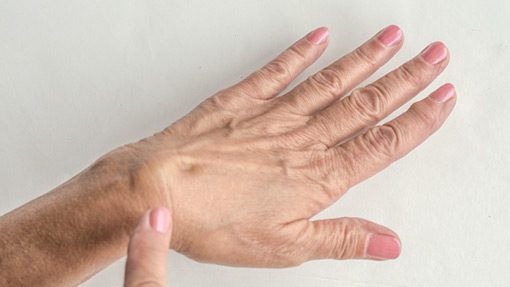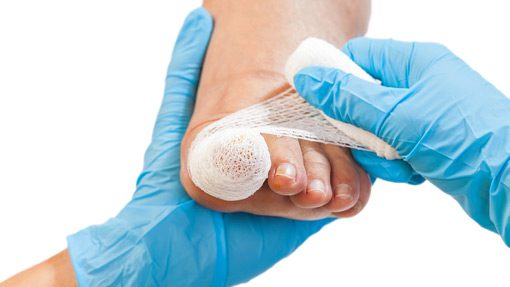Does Your Skin Journey Require Surgery?
We take the time to learn about your priorities and concerns, working together to design a surgical approach for achieving healthy, beautiful skin.
We understand that the thought of surgery can feel overwhelming, but our caring and supportive team is here to make your experience as smooth and stress-free as possible.
From the moment you walk through our doors, we’ll take the time to explain your diagnosis, answer your questions, and ensure you feel confident and at ease on your surgical day. Led by Dr. Christie Regula, a double board-certified expert in Dermatology and Micrographic Dermatologic Surgery with over 10,000 successful procedures, you can trust that you’re in the best hands.
Our focus is not only on accurate diagnosis and effective treatment but also on delivering beautiful, natural-looking results you’ll feel great about!
Have questions?
Please click the button below to request a consultation.

Prepare for Surgery:
-
- Understand your procedure.
- Be prepared with bandage supplies.
- Shower and wash your hair.
- Eat a normal breakfast or lunch.
- Plan to limit physical activity for several days.
Mohs Surgery
Mohs Surgery: Precision in Skin Cancer Treatment
Mohs surgery represents the gold standard in the surgical management of certain types of skin cancer, providing patients with the best possible outcomes in cancer control and cosmetic satisfaction. Renowned for its precision and high success rate, Mohs surgery combines advanced surgical techniques with detailed microscopic examination to ensure complete cancer removal while preserving as much healthy tissue as possible.
What Is Mohs Surgery?
Mohs surgery is a specialized, step-by-step procedure designed to treat skin cancers, including basal cell carcinoma and squamous cell carcinoma. Named after Dr. Frederic Mohs, who developed the technique, it is particularly effective for cancers located in sensitive areas, such as the face, scalp, hands, and feet, where preserving appearance and function is critical. This process ensures maximum accuracy, minimizing the removal of healthy tissue while achieving a cure rate of up to 99% for certain types of skin cancer.
Benefits of Mohs Surgery
- High Cure Rate: Mohs surgery has the highest success rate of all skin cancer treatments.
- Tissue Conservation: Only cancerous tissue is removed, preserving healthy skin.
- Immediate Results: Microscopic analysis is performed during the procedure, eliminating the need for multiple visits.
- Minimized Scarring: By preserving healthy tissue, Mohs surgery reduces the risk of noticeable scars.
Who Is a Candidate for Mohs Surgery?
Mohs surgery is recommended for:
- Skin cancers in cosmetically or functionally sensitive areas (e.g., nose, eyelids, lips, ears, hands).
- Recurrent skin cancers.
- Large, aggressive, or rapidly growing tumors.
- Cancers with poorly defined edges.
- Patients who are immunosuppressed.
What to Expect During the Procedure
The procedure is performed in our office under local anesthesia. Patients remain awake and comfortable throughout the surgery. Mohs surgery can take several hours, however, most of the time is spent creating and reviewing the microscope slides to determine if your cancer has been completely removed. During this time, patients wait comfortably in our office. After removing all cancerous tissue, Dr. Regula will discuss reconstruction options to optimize healing and appearance while taking into account your lifestyle and preferences.
What is Reconstruction?
Reconstruction is the process of placing stitches to repair the area where the skin cancer was removed. Most patients who undergo Mohs surgery will have reconstruction of their surgical wound. However, there are some cases where reconstruction is not needed and the wound is allowed to heal on its own. Possible reconstructive options include stitching the skin side-to-side, skin grafts, or local skin flaps. Dr. Regula performs nearly all reconstructions on the same day as Mohs surgery.
What to Expect After Surgery
Following surgery, you will have a bandage in place for 48 hours. During this time, you should keep the area dry and limit strenuous activity. Mohs surgery can be stressful, you’ll want to go home and relax for the remainder of the day. The surgical site may be sore after surgery. We ask that you ice the area for 20 minutes out of every hour until bedtime on the day of surgery. Our staff will also instruct you on the use of Tylenol and ibuprofen for pain control, prescription pain medication is rarely needed.
After 48 hours, we ask that you remove your bandage, wash the area with soap and water, and apply Vaseline or Aquaphor and a Band-Aid. You will repeat this process daily until stitches are removed in our office, typically 7-10 days after surgery. There may be instances where dissolving stitches are used and removal is unnecessary. It is important to know that the scar line will be swollen and red after surgery. This is due to post-operative swelling and also sutures that are placed under the skin. These sutures take up to 6 months to dissolve and as they do so, the scar line will flatten. It is important, but sometimes difficult, to be patient during the wound healing process. Our goal is always to make the scar as least noticeable as possible within several weeks of your procedure. However, full healing of the surgical site takes 6-12 months and we will continue to follow with you until we are both pleased with the outcome.
Insert button for “Wound Care Instructions” which will link to PDF of instructions.
How to Prepare for Mohs Surgery
- Shower: Please shower before your visit. You will be unable to get your bandage wet for 48 hours. Be prepared and shower/wash your hair before surgery.
- Food and Drink: Please be sure to eat something before your visit. It helps to prevent dizziness during the procedure. We do have complimentary beverages and snacks however; you may also want to bring something of your own.
- Medications: Take all of your normal medications. This includes prescribed blood thinners, unless our office has instructed you otherwise.
- Wait Times: Please bring something to occupy your time. There is waiting involved in the Mohs surgery process and you can expect to be at our office for several hours. Please bring a book, computer, tablet, or anything else to help pass the time. We provide access to guest Wi-Fi to keep you connected while you wait.
- Length of Procedure: Please don’t make any other plans for your surgical day. It can be difficult to predict how long you will be at our office. The length of your procedure will depend on several factors, including the extent and location of the skin cancer being treated. If you have multiple sites or large and complex tumors, you should expect to be at our clinic for an extended period. You will also likely be tired after the procedure and want to rest for the remainder of the day.
- Companion: If possible, bring someone with you. Unless we are working around the eye area, most patients are able to drive themselves to and from their appointment. However, having a companion makes the waiting go faster and is helpful for understanding instructions.
- Clothing and Makeup: Wear comfortable clothes and no makeup. You will be lying down for the procedure and may also need to change into an exam gown.
- Surgical Site: Please look in the mirror and feel comfortable with the spot that is going to be worked on. Your surgery may not take place until several weeks after your biopsy and the location may be difficult to see. Be aware of where the spot is and take a photo, if possible.
Trust the Experts
Choosing an experienced Mohs surgeon ensures the best outcomes. Dr. Christie Regula is a true expert in her field. She has served the Pittsburgh community for over 10 years, performing over 10,000 Mohs surgeries. Still, we understand that this may be your first, and we will take the time to walk you through your diagnosis and procedure. Our skilled team combines expertise, compassion, and state-of-the-art technology to provide personalized care tailored to your needs.

Skin Cancer Excision
What is Skin Cancer Excision?
Skin cancer excision is a surgical procedure where a cancerous skin growth is removed along with a small margin of healthy tissue. This treatment is commonly used to treat skin cancers, such as basal cell carcinoma, squamous cell carcinoma, and melanoma that are located on the trunk or extremities.
How is a Skin Cancer Excision Performed?
An excision is performed in our office under local anesthesia. The area is first numbed to ensure comfort throughout the procedure. Dr. Regula will surgically remove the tumor along with the recommended margin of normal skin. Stitches are then placed to close the wound and give the best possible cosmetic appearance. The tissue removed will be sent to an outside lab for examination, to be sure that all of the skin cancer has been removed.
What to Expect After Surgery
Following surgery, you will have a bandage in place for 48 hours. During this time, you should keep the area dry and limit strenuous activity. The surgical site may be sore after surgery. We ask that you ice the area for 20 minutes out of every hour until bedtime on the day of surgery. Our staff will also instruct you on the use of Tylenol and ibuprofen for pain control, prescription pain medication is rarely needed.
After 48 hours, we ask that you remove your bandage, wash the area with soap and water, and apply Vaseline or Aquaphor and a Band-Aid. You will repeat this process daily until stitches are removed in our office, typically 10-14 days after surgery. There may be instances where dissolving stitches are used and removal is unnecessary.
It is important to know that the scar line will be swollen and red after surgery. This is due to post-operative swelling and also sutures that are placed under the skin. These sutures take up to 6 months to dissolve and as they do so, the scar line will flatten.
It is important, but sometimes difficult, to be patient during the wound healing process. Our goal is always to make the scar as least noticeable as possible within several weeks of your procedure. However, full healing of the surgical site takes 6-12 months and we will continue to follow with you until we are both pleased with the outcome.
Insert button for “Wound Care Instructions” which will link to PDF of instructions.

Cyst and Lipoma Removal
What are Cysts and Lipomas?
Cysts and lipomas are non-cancerous growths of the skin. A cyst is a collection of skin debris under the surface of the skin that is surrounded by a cyst wall. A lipoma is a collection of fatty tissue under the skin. While neither is cancerous, they can enlarge over time and become painful and sore. This is typically when patients desire to have them removed.
How is a Cyst or Lipoma Removed?
Removal of a cyst or lipoma is performed in our office under local anesthesia. The area is first numbed to ensure comfort throughout the procedure. Dr. Regula will make a skin excision over the cyst or lipoma to visualize the growth and remove it. Stitches are then placed to close the wound and give the best possible cosmetic appearance. The tissue removed will be sent to an outside lab for examination, to confirm the diagnosis.
What to Expect After Surgery
Following surgery, you will have a bandage in place for 48 hours. During this time, you should keep the area dry and limit strenuous activity. The surgical site may be sore after surgery.
We ask that you ice the area for 20 minutes out of every hour until bedtime on the day of surgery. Our staff will also instruct you on the use of Tylenol and ibuprofen for pain control, prescription pain medication is rarely needed.
After 48 hours, we ask that you remove your bandage, wash the area with soap and water, and apply Vaseline or Aquaphor and a Band-Aid. You will repeat this process daily until stitches are removed in our office, typically 7-14 days after surgery.
There may be instances where dissolving stitches are used and removal is unnecessary. It is important to know that the scar line will be swollen and red after surgery. This is due to post-operative swelling and also sutures that are placed under the skin. These sutures take up to 6 months to dissolve and as they do so, the scar line will flatten.
It is important, but sometimes difficult, to be patient during the wound healing process. Our goal is always to make the scar as least noticeable as possible within several weeks of your procedure. However, full healing of the surgical site takes 6-12 months and we will continue to follow with you until we are both pleased with the outcome.
Insert button for “Wound Care Instructions” which will link to PDF of instructions.

Nail Surgery
Nail surgery is a specialized medical procedure designed to treat various conditions affecting the fingernails or toenails. Whether addressing skin cancer of the nail, ingrown nails, or underlying skin issues, nail surgery is a safe and effective solution to restore nail health and alleviate discomfort.
What is Nail Surgery?
Nail surgery involves the removal of part or all of a nail and the surrounding tissue to treat medical conditions. Performed under local anesthesia, this outpatient procedure is tailored to address specific issues while minimizing discomfort and promoting optimal healing.
Common Conditions Treated with Nail Surgery
- Unknown Growths: Cancerous or non-cancerous growth can cause nail discoloration or deformity. Nail surgery is often needed to perform a biopsy and diagnose these growths.
- Skin Cancer of the Nail: Skin cancer can occur on and around the nail. Removal of the nail and tumor, often with Mohs surgery, provides excellent cure rates while avoiding a larger surgery.
- Ingrown Toenails: When the edge of the nail grows into the surrounding skin, causing pain, redness, and swelling.
- Nail Trauma: Injuries resulting in nail deformities or persistent pain.
What to Expect After Surgery
After nail surgery, patients may experience mild discomfort, which can be managed with over-the-counter pain relievers. Proper aftercare is very important for optimal healing and includes:
- Keeping the area clean and dry.
- Changing dressings as instructed.
- Wearing comfortable, open-toe footwear if treating toenails.
- Avoiding strenuous activities until the area has healed.
Nail regrowth can take 6-12 months, but any surgical discomfort typically improves in 1-2 weeks. Sometimes permanent removal of the nail is necessary for adequate treatment.
Insert button for “Wound Care Instructions” which will link to PDF of instructions.
